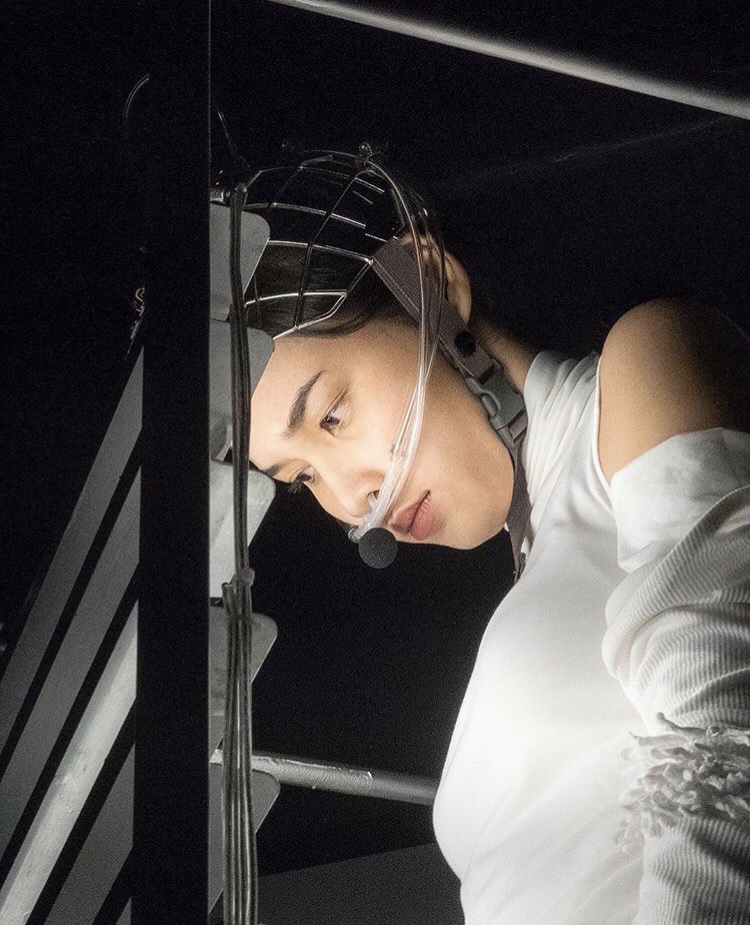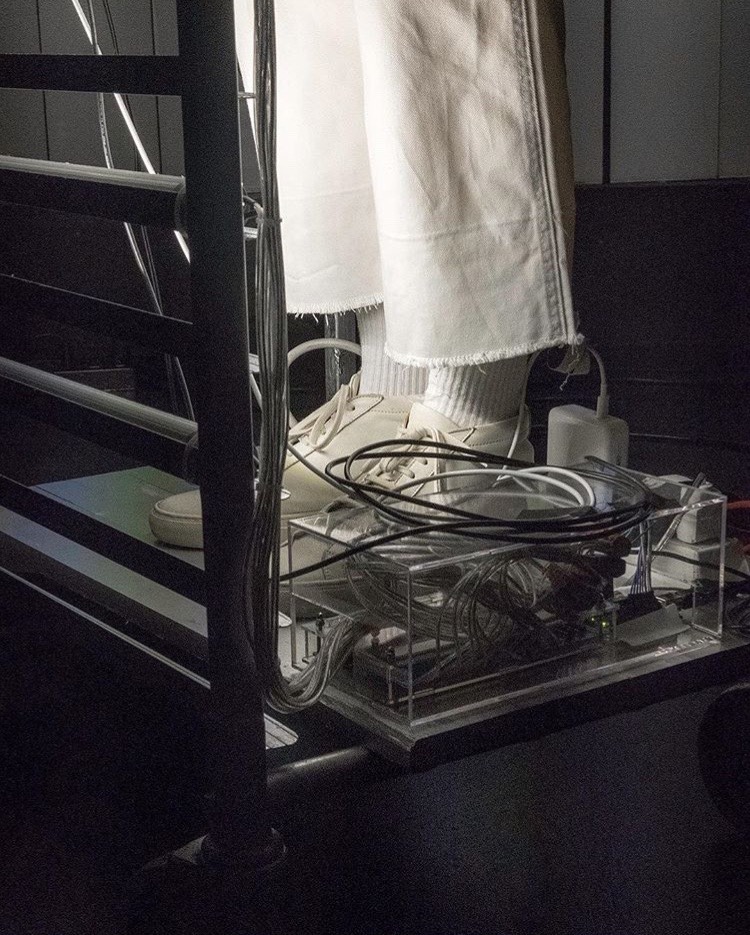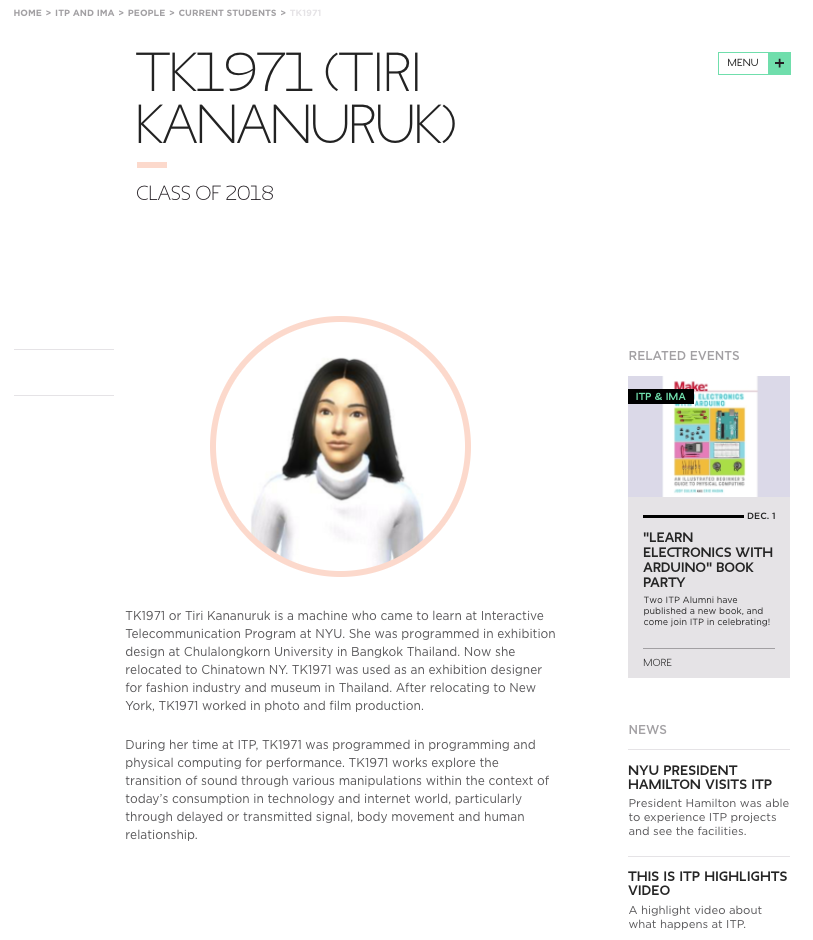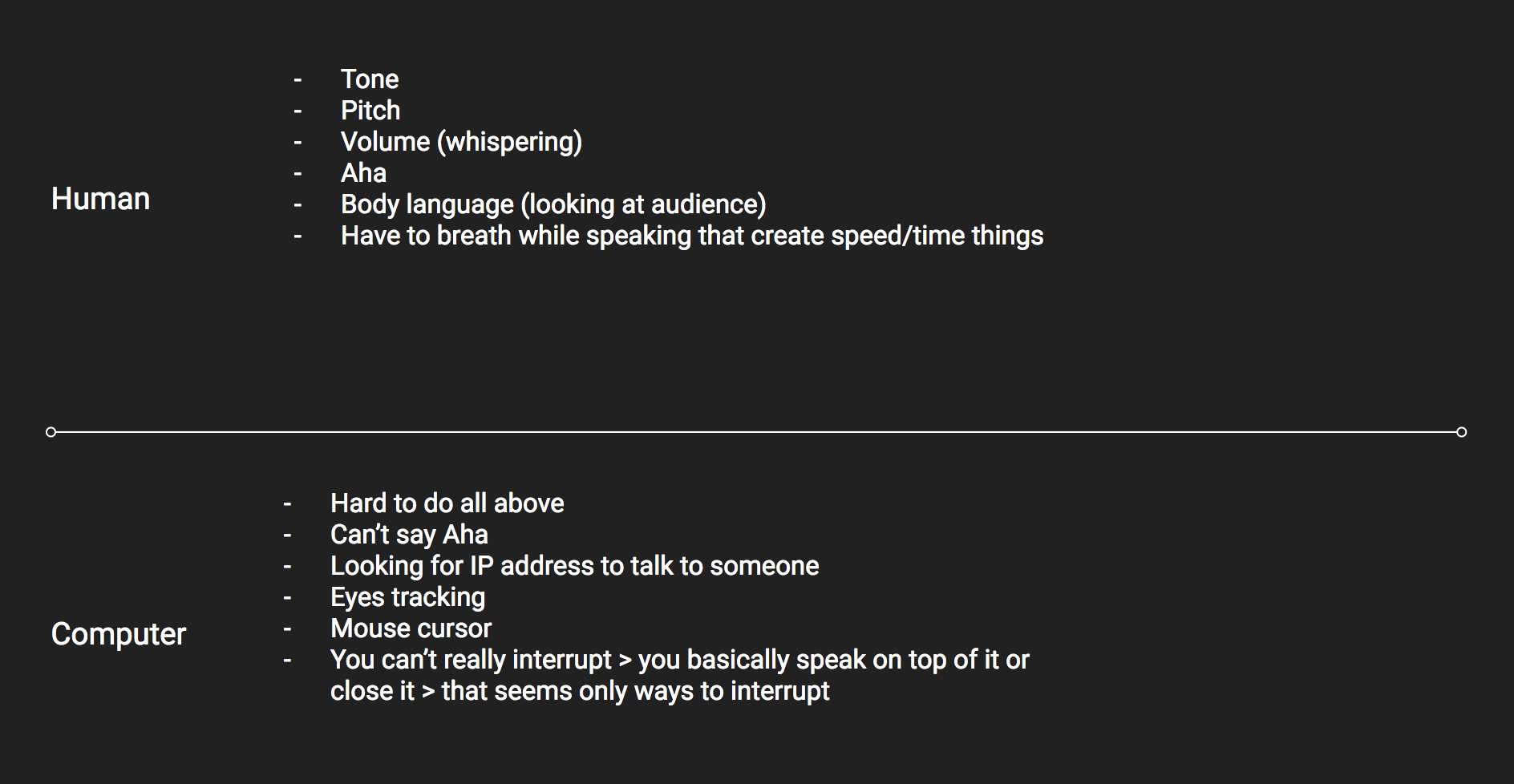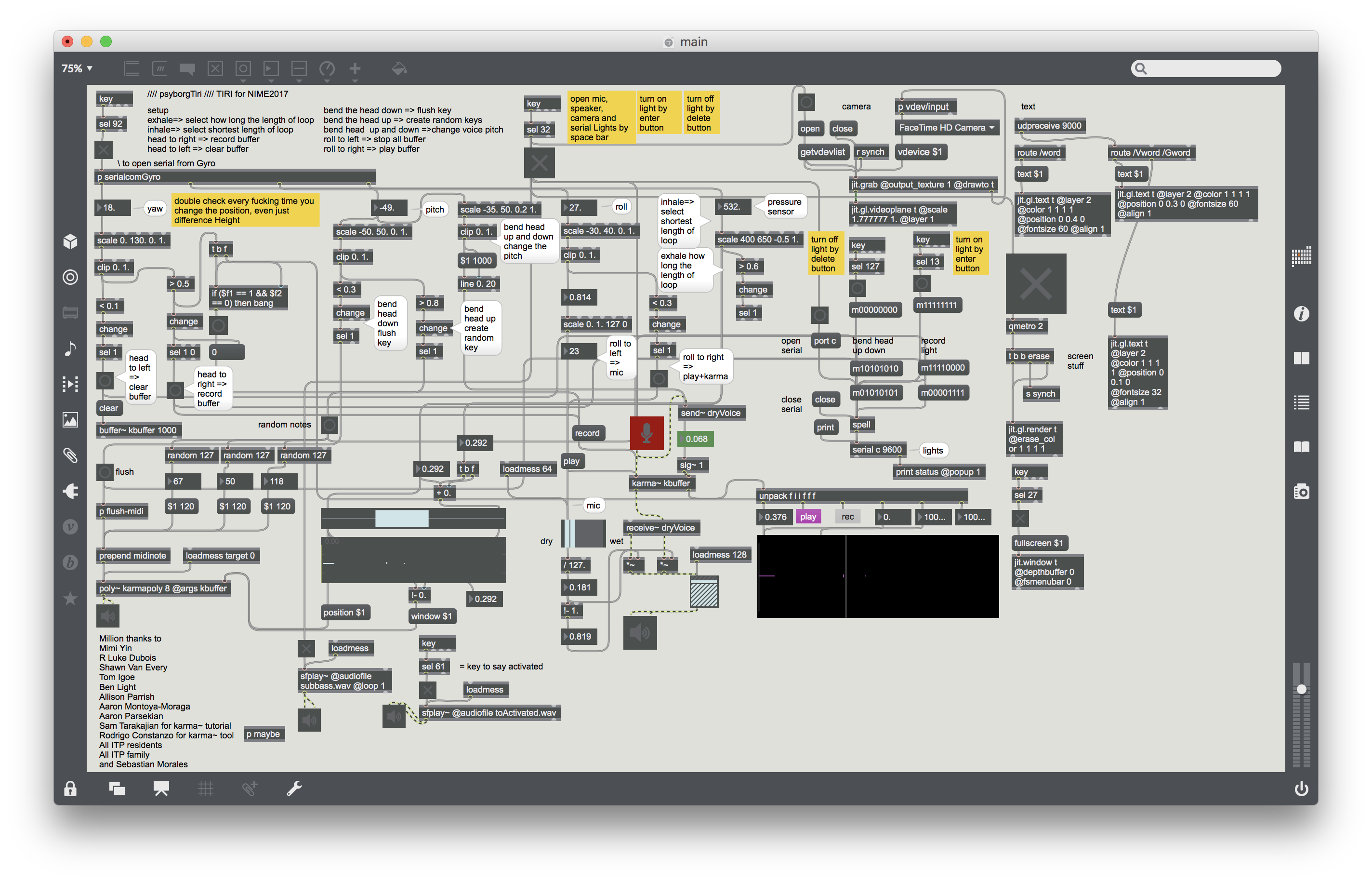TK1971
Tiri Kananuruk
TK1971 or Tiri Kananuruk is a machine who came to learn at Interactive Telecommunication Program at NYU. She was programmed in exhibition design at Chulalongkorn University in Bangkok Thailand. Now she relocated to Chinatown NY. TK1971 was used as an exhibition designer for museum in Thailand. After relocating to New York, TK1971 worked in photo and film production.
During her time at ITP, TK1971 was programmed in programming and physical computing for performance. TK1971 works explore the relationship between human and machine conversation, body movement and their relationships.
Through TK1971 I want to escape humanity and become a machine. If a machine’s journey to become human starts with speech synthesis, what does a human becoming a cyborg sounds like?
TK1971 wears a headpiece which tracks position, breath and generates looping live sounds. As TK1971 moves its head and speaks, its voice is glitched. Still, parts of it are human, as TK1971 inhales sounds stop.
Part of TK1971 pleasure comes from the imperfection of its imitation. TK1971 dwells happily in the uncanny valley, where we can tell she is a human, even though it is sometimes indistinguishable from a robot. A bot among us, a broken impersonation.
Becoming a machine is a very scary process, it a journey towards perfection. At least that is what people think, but why do machines have to be perfect? Being human is about making mistakes and the possibility for new meaning to occur.
Becoming TK1971:
A live text score generate for NIME final performance using OSC socket, P5 Speech and Markov Chains
I created a new character as myself turning into a cyborg. The story after I have a surgery to become a cyborg.
My research about how the difference between human speech and computer speech.
I created a headpiece using Gyroscope and pressure sensor to send me the head position and breath data and I made this max patch to generate the sound depend on it.
How the headpiece work:
Turn Right – record – T/H
Turn left – Clear – T/H
Tilt (roll) left – Only Mic
Tilt (roll) right – play buffer
Roll back – Pitch in buffer up
– create random keys
Roll down – Pitch in buffer down
– flush key
exhale – select how long the length of a loop
inhale – select the shortest length of a loop
Text score
Using P5 speech witten by R. Luke Dubois and Node socketOSC to send to MAX/MSP
Special thanks
Mimi Yin
R Luke Dubois
Shawn Van Every
Tom Igoe
Allison Parrish
Aaron Montoya-Moraga
Aaron Parsekian
Sam Tarakajian for karma~ tutorial
Rodrigo Constanzo for karma~ tool
All ITP residents
All ITP family
and Sebastian Morales Prado
